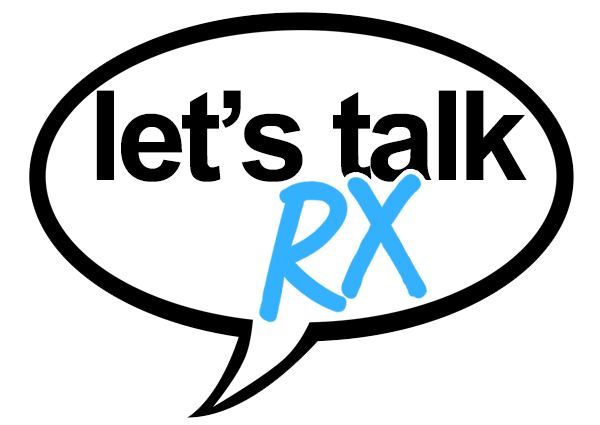Inflammatory bowel disease (IBD) isn’t just an adult condition. For thousands of children and adolescents across the country, conditions like Crohn’s disease and ulcerative colitis are daily realities that shape their childhood experiences. While sharing similarities with adult IBD, pediatric IBD comes with unique challenges that require specialized understanding and management approaches.
The Growing Challenge of Pediatric IBD
Over the past few decades, medical professionals have noticed a concerning trend: IBD diagnoses in children are on the rise. Recent studies suggest that approximately 25% of IBD cases are diagnosed before the age of 20, with some children receiving diagnoses as young as 2 or 3 years old.
What’s particularly troubling is the acceleration of this trend. The incidence of pediatric IBD has nearly doubled since the 1990s, with the steepest increases seen in children under 10 years old. This shift has prompted researchers to look beyond genetics toward environmental factors that might be influencing this surge, including changes in diet, antibiotic use, and other aspects of modern living that affect gut bacteria development.
How Children’s IBD Differs from Adults
When IBD develops in a child, it presents unique challenges that adult patients typically don’t face. The disease often behaves differently in young bodies:
More Extensive Disease: Children with Crohn’s disease frequently experience more widespread inflammation throughout their digestive tract compared to adults. While adults might have isolated areas of inflammation, children commonly have involvement of multiple segments of both the small and large intestines.
More Aggressive Course: Pediatric IBD often progresses more rapidly and aggressively than adult-onset disease. Children frequently require more potent medications earlier in their treatment journey, and may face a higher likelihood of surgical intervention during their lifetime.
Unique Symptoms: While both adults and children experience common IBD symptoms like diarrhea, abdominal pain, and fatigue, children may present with less typical features. These can include isolated growth delays without obvious digestive symptoms, unexplained anemia, or joint pain that diverts attention from the underlying gut inflammation.
Treatment Response Differences: Children sometimes respond differently to standard IBD treatments. For example, exclusive enteral nutrition (a specialized liquid diet) is particularly effective as first-line therapy for pediatric Crohn’s disease, while being less commonly used in adults.
Recognizing IBD in Children: A Detective Story
Diagnosing IBD in children can resemble piecing together a puzzle, as symptoms often appear gradually or mimic other childhood conditions. Parents and pediatricians need to watch for these warning signs:
Growth Concerns: A child who falls from their established growth curve or experiences unexplained weight loss deserves further evaluation. Sometimes, slowed growth occurs before digestive symptoms become obvious.
Digestive Distress: Persistent stomach pain, especially around the navel or lower right abdomen, coupled with changes in bowel habits, should prompt consideration of IBD. Children might experience urgent bathroom needs or incomplete evacuation sensations.
Fatigue and Energy Changes: Children with undiagnosed IBD often experience decreased energy, affecting school performance and participation in previously enjoyed activities.
Delayed Puberty: IBD’s inflammatory processes and nutritional impacts can delay normal pubertal development, serving as an important clue to underlying disease.
When these signs appear, a comprehensive diagnostic approach becomes essential. Modern pediatric IBD diagnosis typically involves:
Laboratory Tests: Blood work to assess inflammation levels, nutritional status, and anemia indicators, along with stool tests to check for inflammatory markers and rule out infections.
Imaging Studies: MRI enterography (a specialized type of MRI focusing on the intestines) has become particularly valuable in pediatric cases, as it avoids radiation exposure while providing detailed views of intestinal inflammation.
Endoscopic Procedures: Upper and lower endoscopies with biopsies remain the gold standard for diagnosis, allowing direct visualization of intestinal tissues and collection of samples for microscopic examination.
How IBD Impacts Growing Bodies
Perhaps the most significant difference between pediatric and adult IBD is the condition’s impact on growth and development. Children diagnosed with IBD face several developmental challenges:
Growth Delays: About 30-40% of children with Crohn’s disease experience growth impairment. This occurs through multiple mechanisms: inflammation increases energy requirements, decreases appetite, and impairs nutrient absorption, while also directly affecting growth hormone function.
Bone Health Concerns: The combination of inflammation, medication effects (particularly corticosteroids), and potential vitamin D and calcium malabsorption can compromise bone density during critical development periods. This places children at risk for both immediate and long-term bone health problems.
Delayed Sexual Maturation: Puberty can be significantly delayed, particularly in boys with Crohn’s disease. This delay can have profound psychological impacts during the sensitive adolescent years when peer development comparisons are common.
Nutritional Deficiencies: Growing bodies require substantial nutritional resources, and IBD’s impact on digestion and absorption can lead to deficits in iron, zinc, vitamin D, and other essential nutrients that support healthy development.
Early intervention is critical to minimizing these effects. Treatment approaches in pediatric IBD are increasingly focused not just on controlling inflammation but on ensuring normal growth trajectories remain possible. Regular monitoring of growth parameters has become as important as tracking digestive symptoms in evaluating treatment success.
The Interconnected Challenges of Physical and Emotional Development
While physical growth concerns often take center stage in pediatric IBD discussions, the condition’s impact on emotional and social development deserves equal attention. Children with IBD navigate complex emotional territory:
School Impact: Frequent absences for illness, medical appointments, and procedures can disrupt academic progress and social connections. Studies indicate that children with IBD miss approximately three times more school days than their healthy peers.
Social Development Challenges: Managing a condition that involves bathroom urgency during crucial social development years creates unique stressors. Concerns about having accidents, needing bathroom access, or explaining their condition can lead to social withdrawal.
Identity Formation: Developing a sense of self while managing a chronic condition adds complexity to the already challenging adolescent identity formation process. Young people must integrate their patient identity with their emerging personal identity.
Healthcare providers are increasingly recognizing that comprehensive care must address these psychosocial dimensions alongside medical management. Many pediatric IBD centers now include psychologists and social workers as integral team members.
Looking Forward: Promising Developments in Pediatric IBD
Despite these challenges, there’s significant cause for optimism in pediatric IBD care. Research specifically focused on childhood IBD has accelerated in recent years, leading to several encouraging developments:
Earlier Diagnosis: Improved awareness and diagnostic techniques are helping identify children with IBD sooner, allowing earlier intervention before growth and development impacts become severe.
More Targeted Therapies: The expanding array of biologic medications is providing more precise treatment options with fewer side effects than traditional medications.
Improved Growth Outcomes: With earlier diagnosis and more effective therapies, more children with IBD are achieving normal growth patterns than in previous decades.
Transition Programs: Structured programs are emerging to help adolescents successfully transition from pediatric to adult care, ensuring continuity during this vulnerable period.
Understanding the unique aspects of pediatric IBD forms the foundation for effective management. In the next article in this series, we’ll explore the specific treatment approaches that help children with IBD thrive despite their diagnosis, including medication strategies, nutritional therapies, and when surgical interventions might be necessary.








